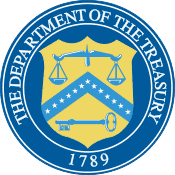Promise and Pitfalls of Treasury Fintech Report

 This post has been adapted from remarks delivered at the Financial Service Centers of America’s conference, Money Trends in Alternative Financial Services, held in Las Vegas, Nevada.
This post has been adapted from remarks delivered at the Financial Service Centers of America’s conference, Money Trends in Alternative Financial Services, held in Las Vegas, Nevada.
July 31st, 2018, was one of the most exciting days for financial technology regulation in recent memory. Around 10 a.m. that morning was when the long-awaited Treasury report on nonbank financials, fintech, and innovation was released, outlining the White House’s position on fintech and nonbank regulation. Then around 2 p.m. that same afternoon, the Office of the Comptroller of the Currency (OCC) announced that they would begin accepting applications for the much anticipated “fintech” charter.
The Treasury report is a promising sign of the times to come for the Trump administration. Overall, it is greatly supportive of financial innovation and the regulatory reform efforts needed to help it flourish. With regards to fintech lending in particular, the report recognizes that the U.S. has one of the strongest and most innovative sectors in the world, with fintech firms now holding more than a third of all personal loans, beating both banks and credit unions with more than $45 billion in loans outstanding. However, Treasury also recognizes that there is a great risk of the U.S. falling behind the rest of the world if it fails to provide an appropriate regulatory environment.
Treasury recommends a number of ways to improve the regulatory system, including:
- State harmonization of regulation and supervision, such as the Conference of State Bank Supervisor’s Vision 2020
- Establishing the OCC’s special purpose charter
- Clarifying the bank partnership model through codifying the “valid when made” and “true lender” doctrines, which will fix the problems created by the Second Circuit court decision Madden v. Midland
- Establishing a federal regulatory sandbox
- Eliminating burdensome federal regulations, such as the Bureau’s payday lending rule
Two of the most exciting provisions are the OCC’s charter and a federal regulatory sandbox.
The OCC’s charter would allow eligible nonbank fintech companies to abide by a uniform set of national banking rules, including preemption of state laws. This has the benefit of providing a single regulator, single licensing process, and single “rule book” versus a patchwork of 50 state regimes, which has proved to be quite a costly barrier. The Government Accountability Office recently found that complying with the fragmented state landscape can cost firms anywhere from $1 million to up to $30 million.
The tradeoff for companies seeking a federal charter is that they will also be subject to many of the same standards as similarly situated national banks, including capital, liquidity, consumer protection, and financial inclusion requirements. This is still a rather large regulatory burden for many firms—and even more burdensome than what the Obama administration proposed.
So far there have been few firms lining up to apply for the charter. This is because the charter still includes heavy regulatory requirements and because it remains uncertain whether it will actually hold up in court, with challenges from the Conference of States Bank Supervisors expected. However, it remains likely that it will survive litigation as it is well within the OCC’s authority under the National Bank Act to grant charters for national banks to carry on the “business of banking,” which is defined as any of the three-core banking functions: receiving deposits, paying checks, or lending money. Nevertheless, the first firm to obtain a charter may have to deal with months or years’ worth of litigation. Therefore, it might even be reasonable to expect that only the largest and ambitious fintech companies will lead the way.
The second-most interesting recommendation of the Treasury report is the idea of a federal regulatory sandbox, which is a form of what Treasury calls “principle-based” regulation. The basic idea is that a regulator would allow companies to offer products and services in a limited way under a modified regulatory regime. This can help to solve the real and detrimental problems of both regulatory uncertainty and regulatory fear.
At the federal level, the Bureau of Consumer Financial Protection is the best option for creating a regulatory sandbox, even though it cannot provide the kind of relaxed licensing regime seen in other sandboxes, such as Arizona. The Bureau does have the pro-innovation tools it needs, however, to create a different sandbox of sorts, as we have seen recently with the creation of an office of innovation and new trial disclosure program.
The Bureau could also revise its’ no-action letter policy to provide for a more flexible enforcement apparatus. It could even make use of safe harbor provisions in three major statutes, the Truth in Lending Act, Equal Credit Opportunity Act, and Electronic Fund Transfer Act to provide more certainty for new financial products. Perhaps even more importantly, the Bureau could work to support state sandboxes by self-limiting its enforcement actions against those it deems appropriately protects consumers—an endeavor they could potentially pursue through a new rulemaking.
But while efforts to promote innovation and regulatory sandboxes are encouraging, it remains to be seen how well this can be achieved amongst regulators such as the Bureau. “Principles based regulation” certainly is a nice idea, but whether or not they can be implemented effectively is another question. For example, while the new administration at the Bureau has been doing a great job of promoting innovation, the same can’t be said of a more aggressive, “envelope pushing” Bureau. The past administration, after all, wrote a no-action letter policy that was completely non-binding, could be revoked at any time, and could take action against firms retroactively—and even then it only issued one letter. The Bureau also first established its trial disclosure program in 2013, but it did not permit a single program in the nearly five years since it was issued. Firms may therefore understandably be reluctant to communicate openly with regulators that have—at least previously and maybe again in the future—taken a hostile attitude towards industry.
Nevertheless, the Treasury’s report on fintech and nonbank financial firms is very encouraging. Both the OCC’s fintech charter and a regulatory sandbox are exciting developments, but we are going to have to wait and see just how they are implemented before determining their value to the fintech sector.